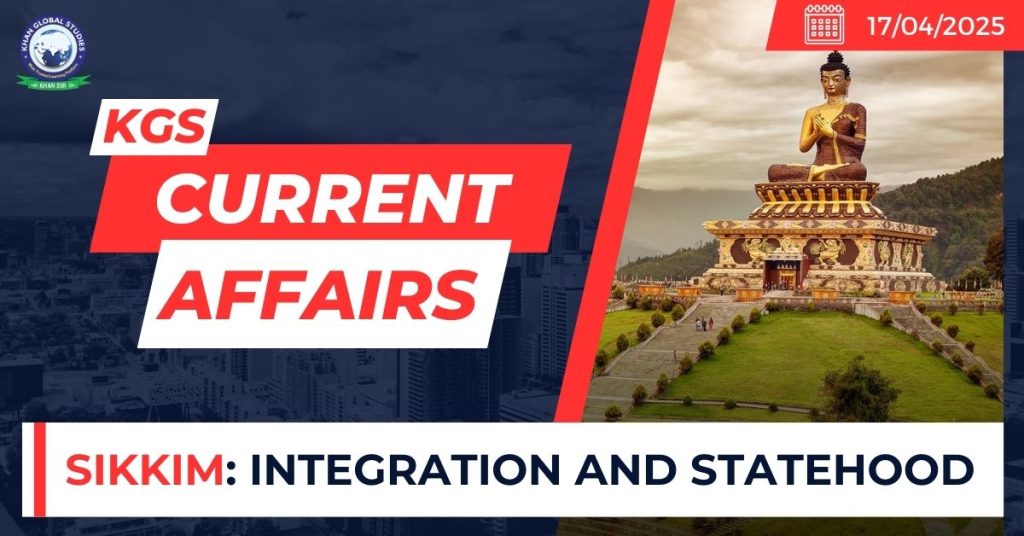Context:
On April 15, 1975, Sikkim overwhelmingly voted for full statehood within the Indian Union and the abolished the institution of monarchy. (Sikkim will celebrate 50th Statehood Day on May 16)
Sikkim’s Integration into India
Early History of Sikkim and the Chogyal Dynasty:

- Sikkim’s Kingdom was established in 1642 when Phuntsong Namgyal was consecrated as the first Chogyal (monarch) of the Namgyal dynasty.
- The Namgyal dynasty ruled for 333 years until Sikkim’s integration into India in 1975.
- The Chogyals were of Tibetan origin, and the kingdom was strategically located between India and China, often involved in regional conflicts with Nepal and Bhutan.
British Colonial Influence:
- The British viewed Sikkim as a buffer state against both China and Nepal, especially following the Anglo-Gorkha War (1814–1816), which helped restore territories lost to Nepal.
- Sikkim became a British protectorate under the Treaty of Tumlong (1861), meaning that while the British had control over its foreign affairs and defense, the Chogyal retained local power.
- Other official treaties:
- The treaty of Titaliya in 1817 gave the British authorities a number of commercial and political advantages in Sikkim.
- The Calcutta Convention of 1890 demarcated the border between Sikkim and Tibet, and was signed by Viceroy Lord Lansdowne and Qing China’s Imperial Associate Resident in Tibet.
- The Lhasa Convention of 1904 affirmed the Calcutta Convention.
Indo-Sikkim Treaty and Protectorate Status (1950):
- In 1950, the Indo-Sikkim Treaty was signed, making Sikkim an Indian protectorate.
- While it retained internal autonomy, it would not be sovereign as India controlled defense, foreign affairs, and strategic communications. Additionally, a clause gave India overriding powers in cases of security threats.
Final Integration (1975)
- Sikkim after 1974 election adopted a new constitution, which restricted the role of the monarch to a titular post.
- The Sikkim Assembly unanimously adopted a resolution on the 10th April, 1975 which, noted the persistent harmful activities of the Chogyal which were aimed at undermining the responsible democratic Government set up under the provisions of the May 8 Agreement of 1973 and the Government of Sikkim Act, 1974.
- A referendum held in 1975 resulted in an overwhelming vote (59,635 votes in favor and 1,496 votes against) in favour of abolishing the monarchy and joining India.
- The Sikkimese people endorsed the resolution passed by the Sikkim Assembly on April 10, which declared the abolition of the Chogyal institution and the state’s integration into India.
- The result of this poll was communicated to the Government of India by the Chief Minister of Sikkim on the 15th April, 1975.
- With the 36th Constitutional Amendment Act, 1975, Indian parliament granted full statehood to Sikkim, officially making it the 22nd state of India and also introduced Article 371-F, to end its monarchy and protectorate status.

